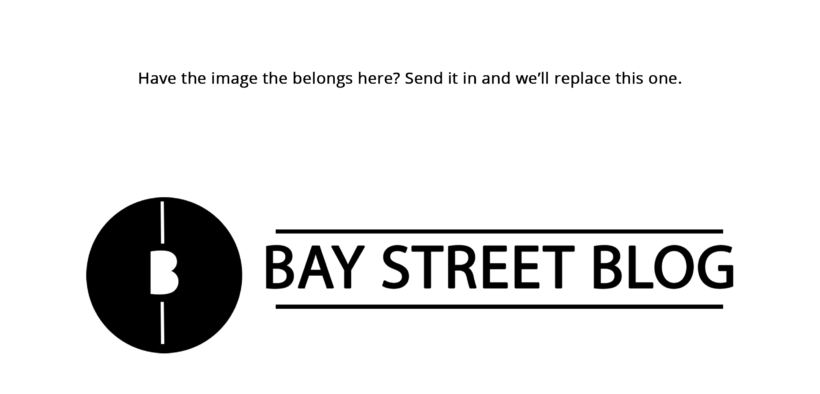Use This Strategy to Save One Million Dollars in 20 Years
Share

The millennial generation is going through a unique situation in terms of personal finances – all time low interest rates and rising student debt. In some cities, such as Toronto and Vancouver, Real Estate prices (renting and owning) are at all time highs.
Despite the personal finance obstacles for millennials, it’s still possible to save one million dollars in 20 years (or less). This can be done through budgeting, strategic borrowing, and setting up an automatic savings plan.
Budgeting
Budgeting is not supposed to be complicating – it’s as simple as understanding your cash inflows and outflows. Having one primary bank (chequing) account makes it much easier to track your cashflows.
Cash inflows include your employee income, government grants, student loans, etc. If a portion of your cash inflow includes loans (such as a student loan), make sure to spend this money wisely. Do not use a student loan to go on a shopping spree, or any other ‘bad debt’ expenditures. Focus on using loans for appreciating assets and/or ‘good debt’ such as education costs.
Cash outflows are basically your expenses, which include, but are not limited to, cell phone bills, tuition, mortgage/rent payments, entertainment expenses, etc. Monthly expenses are one of the weakest points in personal finance for many millennials. Not having track of your expenses can deplete your savings and/or lead to undesirable credit card debt. This can be avoided by simply setting a budget for each item group on your expense list. For example, $200 for entertainment, $150 for food, etc.
It’s extremely convenient to expense all of your purchases on one credit card. With this strategy, you’ll be able to keep track of how much you’ve been spending for the month, and collect reward point simultaneously.
Set up a monthly checkpoint. For example, if your budget for the month is $1000, set up a checkpoint in the middle of the month to see whether or not if you’re on track. This way, you’d be able to understand your position – knowing whether or not your spending is within your budget.
Strategic Borrowing
“Cash is King” – a common phrase used by many of those who do not like debt at all. Debt can be a great personal financial strategy to increase personal net worth at a faster pace. This is evident in many situations, from buying a car, to leveraging on stocks.
Buying a car is one of the many examples that proves that cash really isn’t ‘King’ when it comes to managing your personal finances. Let’s say, you’re contemplating on purchasing a 2015 Honda Civic for approximately $20,000. You’d typically have two options – finance or buying the car outright. Some people would go 50-50, paying half with cash and financing the rest. To keep calculations simple, we’ll look into the financing or buying outright.
In the case of buying the car – let’s say the interest rate is 0.99% (one of those promotional rates), and money can be invested at 8% per annum.
Financing
The $20,000 (five year term) loan for the car would be approx. $443.68/month. At the end of 5 years, the $20,000 invested in the stock market (i.e., ETFs, Mutual Funds) would be worth $29,796. Looking at this from the cash flow perspective – the car owner would have a net worth gain of $3,175 (the difference between the loan payments and capital gain from savings).
Buying Outright
This option simply means buying the car on cash – $20,000 out of your pocket. This option requires no loan, however, the owner misses out on leveraging, and taking advantage of potential capital gains with the $20,000.
The financing option wins. Theoretically speaking, financing the car increased the owner’s net worth by $3,175. It also helps that interest rates are extremely low these days, which makes borrowing more affordable. This is one of the many examples proving that borrowing can help you save one million dollars quicker. Strategic borrowing is all about keeping your debt under control. In other words, as long as you’re able to oblige to your payments, (short-term and long-term) debt is an effective strategy for leveraging on your net worth.
“As long as you’re able to oblige to your payments, (short-term and long-term) debt is an effective strategy for leveraging on your net worth.”
Automatic Savings Plan
One of the most important aspect of your personal finance strategy. This applies for any generation – not just for millennials. Automatic savings plan basically forces you to save a certain amount once your pay comes in. It’s as simple as calling your bank to set up an automatic contribution to your TFSA and/or RRSP account(s).
How much should you save? It really depends on your situation, and your financial objectives. Everyone’s situation is different. Personal finance author, David Chilton, recommends saving 10% of your paycheque to have money set aside for retirement. Setting up an automatic savings plan also helps you differentiate between your ‘spending money’ and your ‘saving money.’
How to save one million dollars
Now here comes the fun part – how can you save one million dollars in 20 years? The answer is a combination of budgeting, strategic borrowing, and automatic savings plans. An automatic savings plan is the most important tool that would help you save one million dollars in 20 years.
Let’s assume, the stock markets return an average of 8% over the next 20 years (8% is approximately the average stock market return over the long-term). With an 8% interest rate, and a time frame of 20 years, you would need to save $790 each biweekly. Using the GetSmarterAboutMoney.ca calculator, the total interest earned over the 20 year period would approximately $599,000.
According to Environics – the average Millennial Household Income is $71,000 – lower than Gen X, and Boomers. Saving $790 biweekly would require an aggressive savings rate of 29%.
Yes, $790 bi-weekly may seem like a big chunk of your pay. However, if you set up an automatic savings plan, you won’t even notice it after a while, because the money gets automatically transferred to your investing accounts. Another strategy is saving a smaller amount now, and increasing each year. Use this savings calculator to work out different scenarios, such as saving a smaller amount for the first five years, then increasing the savings rate for the following years in order to catch up.
For example, you can reach this goal by saving $500 bi-weekly for the first 5 years, $800 biweekly for the second five years, and $1100 biweekly for the last 10 years. The con of this strategy is the fact that you would have to save significantly more in the later years, in order to catch up with the goal of saving one million dollars.
Conclusion
As mentioned above – everyone’s situation is different. If it’s not possible to save $790 bi-weekly – look into reducing the amount and increasing the time frame to reach your goal of saving one million dollars. Play around with the numbers using a savings calculator.
If you can – challenge yourself to save a larger portion of your paycheque. In general, effective savings occurs when you have a budget, and an automatic savings plan in place. Take advantage of strategic lending strategies, since these can help you have a leap start in building your net worth. All in all, keep track of your cash inflows and outflows, and take advantage of long-term investing strategies.
You May Also Be Interested In: Millennial Savings Guide
Writer: Jelani Smith
Disclaimer: All investing can potentially be risky. Investing or borrowing can lead into financial losses. All content on Bay Street Blog are solely for educational purposes. All other information are obtained from credible and authoritative references. Bay Street Blog is not responsible for any financial losses from the information provided. When investing or borrowing, always consult with an industry professional.






Bay Street Blog Newsletter
Click here to subscribe for a financial savvy experience.
Please check your email to confirm subscription!